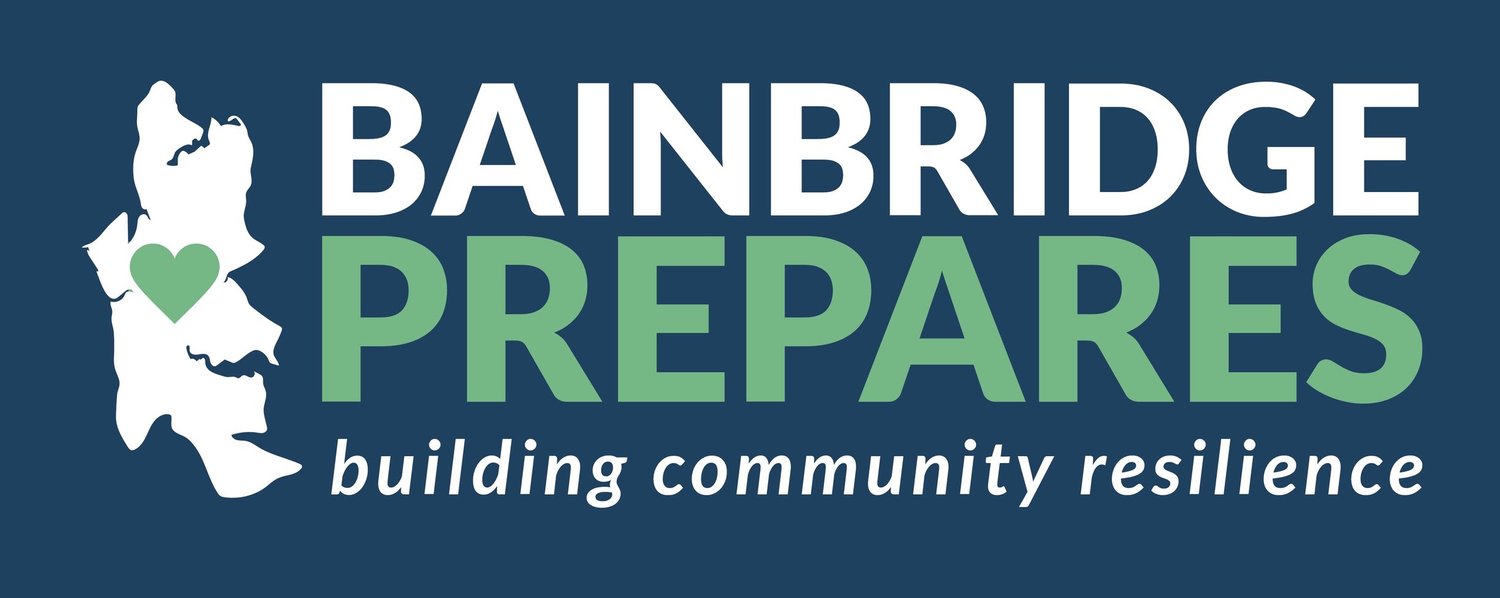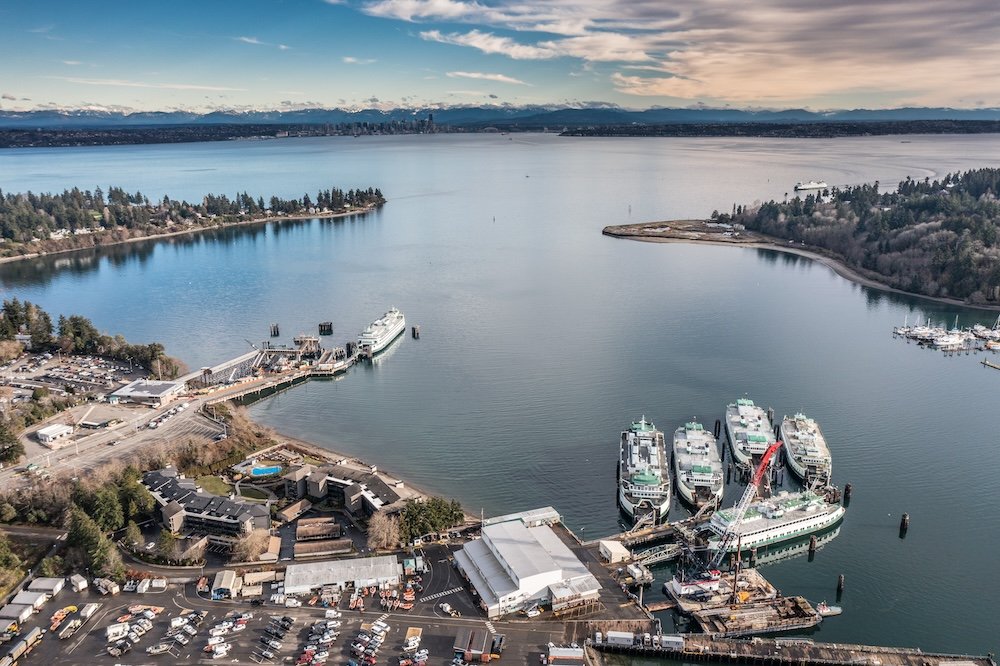New Strategy for Responding to Tsunamis in Eagle Harbor
The Washington Emergency Management Division recently completed a Tsunami Maritime Response and Mitigation Strategy for the City of Bainbridge Island’s Eagle Harbor. This report is the first to take a look at potential impacts from an earthquake on the nearby Seattle Fault.
The report notes that “a large earthquake on the Seattle Fault has a high potential to generate a tsunami,” even though the likelihood of such an event is low: ”only one such event has been recorded in the geologic record over the past 16,000 years.”
Such a tsunami would hit Bainbridge shores quickly, in less than ten minutes. It would be accompanied by strong currents and result in “large-scale inundation along the shoreline and low-lying areas.”
“Eagle Harbor has experienced tsunamis in the past and, despite its resilience, will inevitably face such events again. It is not a question of if, but when, the next tsunami will occur.”
The strategy also looks at potential impacts from a tsunami originating in the Cascadia Subduction Zone. Waves from such a tsunami could enter the Sound via the Strait of Juan de Fuca, reaching Eagle Harbor about 2 hours and 20 minutes later.
This graphic represents maximum current speeds above normal for a Seattle Fault Zone earthquake and tsunami at the mouth of Eagle Harbor. The darker purple colors represent speeds of 9 knots and more above background current speeds.
The report finds that in the modeled Seattle Fault Zone (SFZ) scenario, “the maximum current speeds arrive quickly in less than 10 minutes and are generally much greater than the 6-knot damage threshold.” In addition, “major damage is expected to all maritime infrastructure and large vessels and may result in complete destruction of infrastructure and vessels in the area. There will be widespread debris in the aftermath spread throughout Eagle Harbor. The waterway will be extremely dangerous for boaters caught in the water as rapid water-level changes, whirlpools and eddies will cause sudden current changes and create significant challenges in trying to navigate.”
Strategies
Education. The report calls for a continuation of public education on Bainbridge Island with a focus on helping people understand the risks. People also need to know the safest response to a potential earthquake: If you feel an earthquake, drop, cover, and hold on. As soon as the shaking stops, head to high ground. Don’t wait to find out which fault line originated the quake.
Infrastructure Improvements. Another part of the strategy is to improve Eagle Harbor’s maritime infrastucture. Work already done on the City Dock was a response to long-term sea level rise, but it will also help mitigate tsunami damage. Electrical systems were upgraded five years ago. The electrical systems are now designed to shut down the flow of electricity automatically upon detection of a stray current or faulty wiring.
This graphic shows the water-level changes over time for a Seattle Fault Zone earthquake and tsunami scenario.
The report also calls for the city to shut down harbor infrastructure following a tsunami warning.
Jonathan Bingham, lead marine officer for the City of Bainbridge Island’s Police Department, proposed constructing a dock that could house maritime response assets for the city. This earthquake and tsunami-resistant structure would facilitate faster response times and better coordination with surrounding communities in a tsunami.
“Going through this process, we realized our marine assets, like all the marine infrastructure in Puget Sound, are vulnerable to a tsunami,” Bingham said. “It became clear how self-reliant we as a city would have to become in any circumstance where the City of Bainbridge Island could be cut off from all assistance. The idea would be to protect essential marine assets that will be critical in a post-earthquake/tsunami response.”
“The work Bainbridge Island and its residents have already done in preparing for disasters is admirable—something other communities should look to and replicate. I’m confident they will continue to work on these challenges.”
Additional Recs. Other recommendations are for the City to secure moorings of city-owned vessels, restrict traffic entering the marina by land, identify boat owners and liveaboards, reposition ships, aid in traffic evacuation, pre-stage emergency equipment outside affected areas, and install more tsunami evacuation route signs.
The strategy also identified potential sources of funding to help the city pay for maritime mitigation efforts.
Background
The Tsunami Maritime Response and Mitigation Strategy was developed in partnership with the Emergency Management Division, the Washington Geological Survey, the City of Bainbridge Island, and other key stakeholders. It reflects a collaborative process between the state’s tsunami team and the City of Bainbridge Island and included engaging local expertise, facilitating workshops, and fostering open dialogue with stakeholders.
“Completing the Tsunami Maritime Response and Mitigation Strategy is a testament to the resilience and dedication of Bainbridge Island. I’m incredibly proud of how invested the city and state are in the safety and emergency response of our community, and I want to thank our partners at Bainbridge Prepares and the Washington Emergency Management Division for their unwavering commitment to preparedness. Emergency management is truly a community effort and we couldn’t achieve this milestone without the help and collaboration of everyone involved.”
These figures show inundation (on-land flooding) for a Cascadia Subduction Zone earthquake and tsunami. It would take about an hour and a half for the water-level changes to occur in the area.
The Bainbridge island strategy is the fifth maritime strategy created by EMD. Other strategies have been done for Neah Bay, Anacortes, Bellingham, and Grays Harbor's Westport Marina.
Read the full report here and the report appendices here:
Appendix 1: Tsunami Alert Dissemination Methods (Opens in a new window)(PDF)
Appendix 2: Roles and Responsibilities (Opens in a new window)(PDF)
Appendix 3: Letters of Support Examples (Opens in a new window)(PDF)
Appendix 4: Example Wildfire Response and Evacuation Plan 2022 (Opens in a new window)(PDF)




